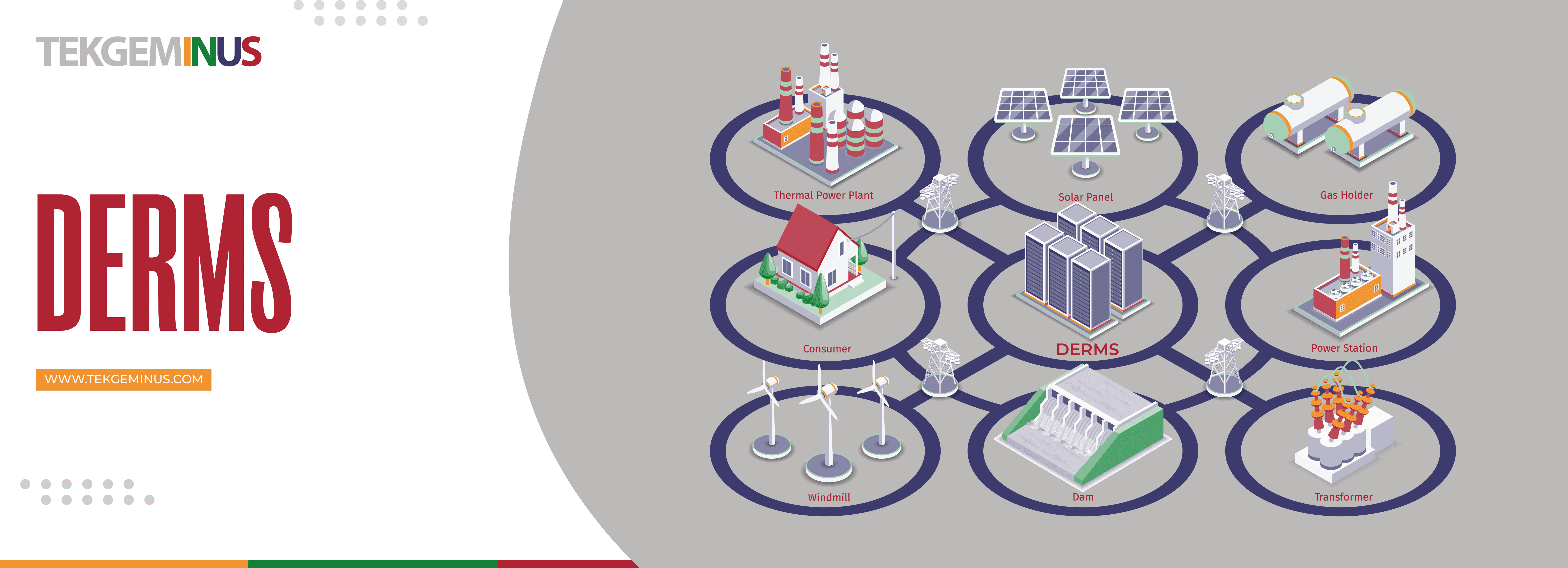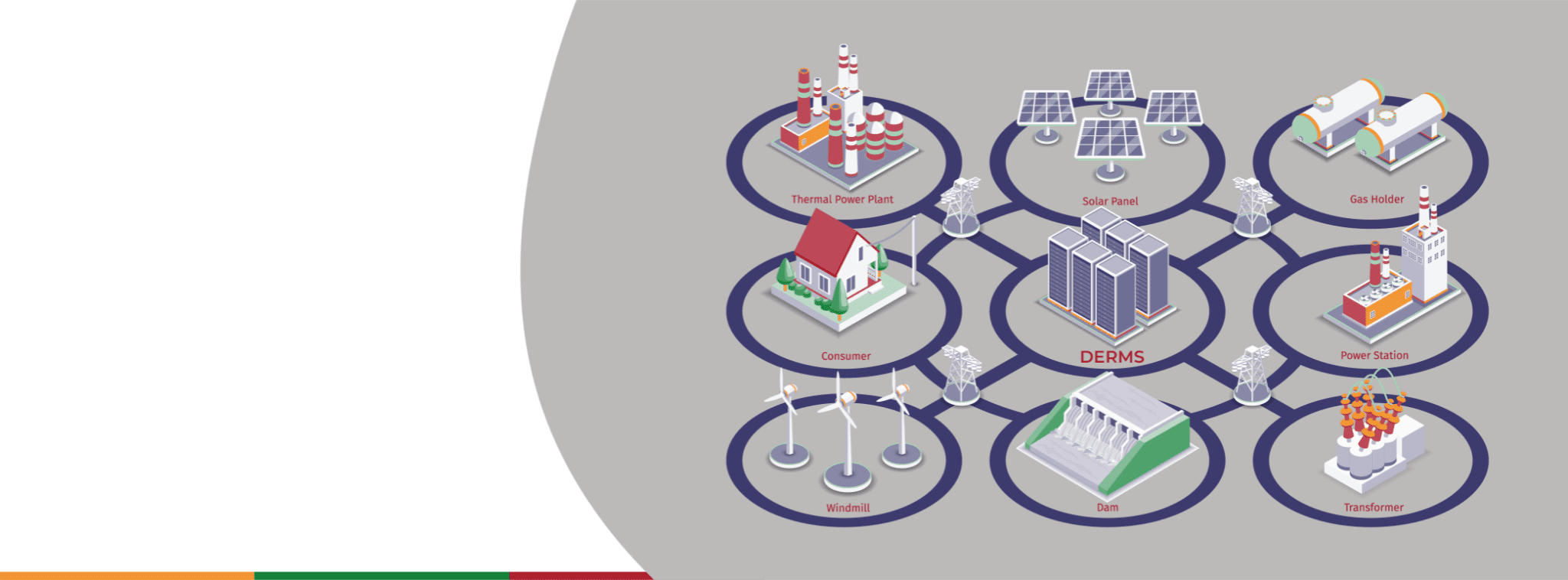What, why, and how Distributed Energy Resources Management systems are the future of the Utility industry.
What is DERMS?
Distributed energy resource management systems (DERMS) have emerged as a critical tool for utilities as they face the challenge of integrating a growing number of distributed energy resources (DERs) onto the electric grid. DERs, which include rooftop solar panels, battery storage systems, electric vehicles, and other smart devices, have disrupted the traditional power generation model by turning customers into suppliers.

Why DERMS is the future?
In the past, utilities forecasted demand for power and dispatched the supply. However, with the proliferation of DERs, the roles will reverse, requiring utilities to forecast the supply and dispatch the load. This shift presents a significant challenge for utilities as they try to manage the complex network of DERs while maintaining a stable and reliable grid. DERMS enables utilities to manage DERs more effectively by providing real-time visibility into the status and performance of distributed energy resources on the grid. DERMS leverages data from smart devices and other sources to optimize the performance of the grid by forecasting energy demand, identifying network constraints, and optimizing the use of DERs.
Customer to Network and Network to Customer – A true end-to-end solution.
The Customer to Network (CtN) and Network to Customer (NtC) models are two fundamental components of a Distributed Energy Resource Management System (DERMS). These models facilitate the bidirectional flow of information and control between the utility network and individual customers or distributed energy resources (DERs).
The Customer to Network (CtN) model focuses on the interaction between customers and the utility network. It enables customers to actively participate in the energy system by integrating their DERs, such as rooftop solar panels or energy storage systems, with the utility grid. Through the CtN model, customers can feed excess electricity generated by their DERs back into the grid, becoming prosumers who both consume and produce energy. This model also enables customers to receive real-time information on grid conditions, electricity prices, and other relevant data to make informed decisions about their energy usage and generation.
On the other hand, the Network to Customer (NtC) model allows the utility network to communicate with and control DERs connected to the grid. It provides utilities with the ability to manage and optimize the operation of these DERs to improve overall grid reliability, stability, and efficiency. Through the NtC model, utilities can remotely monitor and control DERs, curtail their output during times of grid congestion or instability, and dispatch their power to meet specific grid needs or demand response programs. This model enables utilities to effectively integrate and coordinate the diverse DERs connected to the grid, ensuring their collective contributions align with the needs and goals of the overall energy system.
What do DERMs offer to the Utility industry?
DERMS capabilities include the ability to manage day-ahead scheduling with an optimization engine that scales to meet demand and makes real-time adjustments to the grid depending on load demand and the availability of distributed energy devices. Utilities can also use DERMS to build digital twins of DERs, identify network constraints that can be optimized for efficiency, and incorporate machine learning to make real-time decisions.
One key advantage of DERMS is that it can help utilities integrate and manage DERs and the grid in a way that is automated, efficient, and cost-effective. For example, utilities can use DERMS to offer owners of electric vehicles a smart charging program that helps manage charging during peak events and avoids overloading transformers, which can cause outages.
DERMS can critically help utilities fully integrate renewable energy sources into the grid. As more renewable energy sources come online, utilities need to find ways to balance supply and demand to maintain grid stability. DERMS can help utilities forecast renewable energy generation, manage energy storage systems, and optimize the use of DERs to balance supply and demand.
DERMs – The way forward.
Looking to the future, DERMS is poised to become an even more critical tool for utilities as they face the challenges of managing an increasingly complex and dynamic grid. As the pace of technological change continues to accelerate, utilities will need to find ways to adapt and innovate to meet the evolving needs of their customers and the grid. DERMS can help utilities navigate this changing landscape by providing real-time insights into the status and performance of the grid, optimizing the use of distributed energy resources, and integrating renewable energy sources. By leveraging the power of data and machine learning, DERMS can help utilities build a more sustainable, resilient, and reliable grid that benefits everyone.



